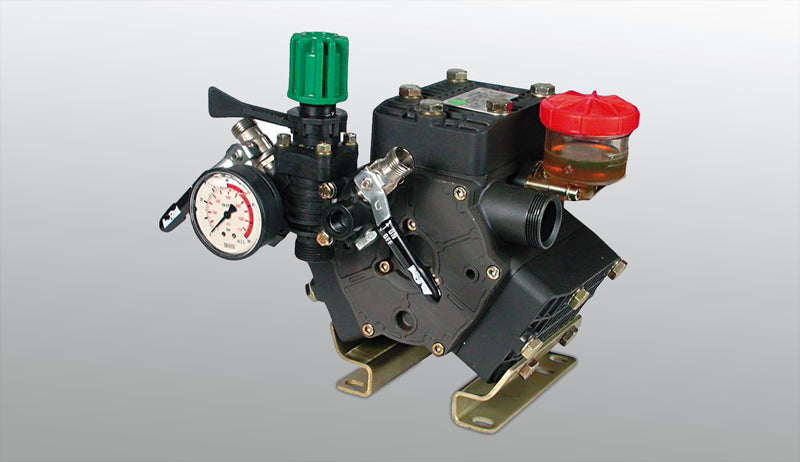When diaphragm pump performance begins to decline it can be difficult to determine what the underlying problem is. In most instances the problem is not with the pump but lies on the suction side of the system.
Below, we show you some of the most common pump problems sprayer operators face and how to troubleshoot. If you have followed the guide below and are still having trouble, please call us at 1-800-706-9530.
| Pump |
Cause |
Solution |
- No pressure
- Pump will not prime
|
- Plugged strainer is restricting flow
- Suction hose obstruction
- Debris in top of strainer
- Pump drawing air through suction line or fittings
- Excessive tank foam due to low tank volume
|
- Clean screen
- Clear obstruction
- Clean top of strainer
- Examine hoses and fittings, ensure airtight fit and no leaks
- Refill tank
|
- Pressure gauge fluctuates wildly
- Excessive pulsation
|
- Pulsation dampener pressure too low or too high
- One or more check valves seating improperly
- Pump drawing air through suction line hose or fittings
- Plugged strainer restricting flow
- Air not entirely evacuated from pump cavity
|
- Adjust pulsation dampener pressure
- Clean or replace check valves
- Examine hose and fittings, ensure air tight and no leaks
- Clean strainer screen
- Run pump with an open discharge to totally evacuate air
|
|
|
- Pump drawing air through suction line hose or fittings
- Plugged strainer restricting flow
- One or more check valves seating improperly
|
- Examine hose and fittings, ensure airtight fit and no possible leaks
- Clean strainer screen
- Clean or replace check valves
|
- Pump oil has milky color
- Oil plug pops out
|
- One or more pump diaphragms have ruptured
|
|

